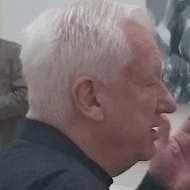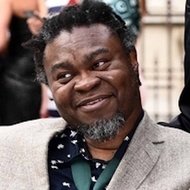
| Born | Solomon LeWitt, September 9, 1928, Hartford, Connecticut |
| Died | April 8, 2007, New York, New York |
| Nationality | American |
| Education | Syracuse University, School of Visual Arts |
| Known for | Painting, Drawing, Sculpture |
| Movement | Conceptual Art, Minimalism |
About Sol LeWitt
Conceptual Artist Sol LeWitt was born in Connecticut, United States on September 9, 1928. He dies at the age of 78, on April 8, 2007.
He is well recognized for his constructions, which are paintings, lithographs, wall drawings, and sculptures. He was skilled in drawing, printmaking, photography, and painting.
All information about Sol LeWitt can be found in this post. It will clarify Sol LeWitt's info: birthday, bio, ability, personality type, family, husband, siblings and drama of Sol LeWitt...
Sol LeWitt before becoming famous
Sol LeWitt was born in the Zodiac sign Virgo (The Maiden), and 1928 is also the year of Dragon (龍) in the Chinese Zodiac.
In 1949, he graduated from Syracuse University with a bachelor's degree in fine arts. During the Korean War, he was stationed in California, Japan, and Korea.
Achievement of Sol LeWitt
"Black Form Dedicated to the Missing Jews", built in 1987 in Hamburg's Altona City Hall, was one of his structures.
Sol LeWitt's Family, Spouse, Dating and Relationship
As the son of a Russian-Jewish immigrant family, he grew up in Hartford, Connecticut. He began taking art classes at Hartford's Wadsworth Atheneum after his mother enrolled him there.
Sol LeWitt Collabed with
He was Pop Artist Jasper Johns' acquaintance.
Sol LeWitt Income & Net worth
Sol LeWitt's income mainly comes from the work that created his reputation: a conceptual artist. Information about his net worth in 2026 is being updated as soon as possible by allfamous.org, you can contact to tell us Net Worth of the Sol LeWitt.
Sol LeWitt Height and Weight
How tall is Sol LeWitt? Information about Sol LeWitt height in 2026 is being updated as soon as possible by AllFamous.org. Or you can contact us to let us know how tall of Sol LeWitt.
People also ask about Sol LeWitt
What is Sol LeWitt's real name?
When is Sol LeWitt's birthday?
When did Sol LeWitt die?
At what age did Sol LeWitt die?
Where is Sol LeWitt from?
When was Sol LeWitt born?
Reference: Wikipedia, Tiktok, Youtube, Instagram and Twitter.
Latest information about Sol LeWitt updated on March 11 2023.




















